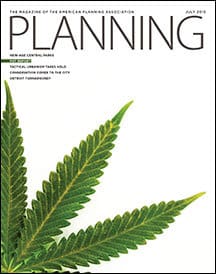 Planning Naked | July 2015
Planning Naked | July 2015
by Dr. Mark David Major, AICP, CNU-A, The Outlaw Urbanist contributor
Observations on the July 2015 issue of Planning Magazine.
1. Some will be disappointed this month’s issue (“Pot Report”) did not come with any free samples; maybe for only APA-CA or APA-CO chapter members, perhaps.
2. APA appears to have suddenly realized (or, maybe, finally remembered) the importance of water in community planning (“From the Desk of APA’s Executive Director”, pp. 3). Well, that partially explains the existence of Los Angeles, Las Vegas, etc. in their current conglomeration. I hope APA appreciates the irony that the next APA national conference is being held in Phoenix… but hey, I hear it’s a dry heat.
3. The biggest news gets a brief mention (“News Briefs”, pp. 7) about the halting of a highway project in Wisconsin because travel forecasts failed to show the road widening was actually needed, and projects in other states are stalled for the same reason. You mean agencies are actually building highways only for the sake of building highways?!?! Eureka! Alleluia! Hosanna! However, APA’s anti-fracking agenda (what a lot of us view as “energy independence”) gets eight times the number of words on the exact, same page. Ahem.
 4. Lots of scare-mongering about the Koontz decision in this month’s “Legal Lessons” (pp. 9). However, the sidebar about “climate exactions” is interesting. I would like to see this tested out in the courts to see if any such ‘climate exaction’ could really bear the burden of legal scrutiny.
4. Lots of scare-mongering about the Koontz decision in this month’s “Legal Lessons” (pp. 9). However, the sidebar about “climate exactions” is interesting. I would like to see this tested out in the courts to see if any such ‘climate exaction’ could really bear the burden of legal scrutiny.
5. “New-Age Central Parks” (pp. 14-23) is interesting but I’m beginning to think a lot of planners are afraid of buildings. Kyle Warren Park in Dallas is OK but is a park really needed across the street from another park? And nobody walks in a curve like the way the paths are laid out in this park. At least, not by choice… are park designers practicing some insidious form of architectural determinism?
6. The “Pot Report” (pp.24-29) is oddly disappointing, lots of questions, no answers, very little really added to the debate or issue.
7. Excellent article on Tactical Urbanism “(We Own This City”, pp. 30-34).
8. “Research You Can Use” discusses the AARP’s new Livability Index. Handle with caution. I inputted the address of one of the worst suburban sprawl areas in Jacksonville, Florida and AARP’s site gave the neighborhood an ‘average’ score of 50. No way! So, either the site is wrong or we have officially crossed the threshold into way, way too much suburban sprawl in this country so it’s skewing the percentages. It’s probably both, now that I think about it.
9. I mention planners are afraid of buildings in #5 above and Peter Gisolfi, AIA addresses this very issue in the Viewpoint editorial on the back page (“A Plea for Buildings that Fit In”). I suspect most planners will discount what he has to say because he does not have an AICP credential. A shame.
Planning Naked is a regular feature with observations and comments about a recent issue of Planning: The Magazine of the American Planning Association.




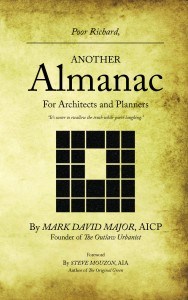



 work in the United States, when it looks like it should”. Read the abstract below for a sneak preview:
work in the United States, when it looks like it should”. Read the abstract below for a sneak preview: The paper outlines the financial, institutional, and legal hurdles and pitfalls confronting space syntax in the American market, especially in the private sector. Using a series of ‘back-of-the-napkin’ financial calculations common to the American planning and development process, the paper demonstrates how these challenges can transform into a distinct advantage for advocating the cause of the space syntax in the United States. Given this, the paper concludes by discussing the enormous challenges and opportunities for space syntax in America today.
The paper outlines the financial, institutional, and legal hurdles and pitfalls confronting space syntax in the American market, especially in the private sector. Using a series of ‘back-of-the-napkin’ financial calculations common to the American planning and development process, the paper demonstrates how these challenges can transform into a distinct advantage for advocating the cause of the space syntax in the United States. Given this, the paper concludes by discussing the enormous challenges and opportunities for space syntax in America today.
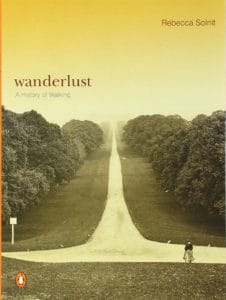
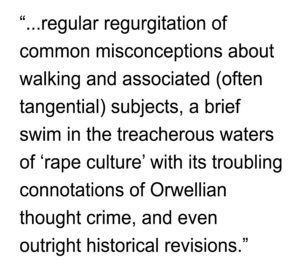 Herein lies the fatal flaw of the book. Soinit chooses to focus her history of walking on extraordinary events rather than ordinary, everyday occurrences (and their observation): this where the real richness about walking as a subject truly lies. It is unfortunate because, while Soinit’s focus is not always objective, she does, on occasion, provide keen observations about some subjects (a brief section on gyms near the end of the book is particular interesting). This unevenness makes Wanderlust: A History of Walking a real endurance test for the reader. There are some gems buried within the text but it is hard work along the path to find them. It will try and defeat most readers’ patience. I endured but I am unsure it was worth the effort.
Herein lies the fatal flaw of the book. Soinit chooses to focus her history of walking on extraordinary events rather than ordinary, everyday occurrences (and their observation): this where the real richness about walking as a subject truly lies. It is unfortunate because, while Soinit’s focus is not always objective, she does, on occasion, provide keen observations about some subjects (a brief section on gyms near the end of the book is particular interesting). This unevenness makes Wanderlust: A History of Walking a real endurance test for the reader. There are some gems buried within the text but it is hard work along the path to find them. It will try and defeat most readers’ patience. I endured but I am unsure it was worth the effort.
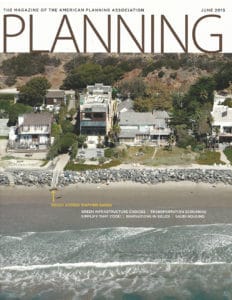 Planning Naked | June 2015
Planning Naked | June 2015 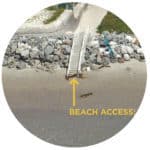
 4. “Great Park Audit Exposes Problems” (page 7): So this is what a planning quagmire looks like! “The master plan was killed… by its own hubris.” That should be on the planning profession’s epithet. It seems like the design and financing concept was flawed from the beginning; corruption thrives under such circumstances. I suspects there’s more to this story.
4. “Great Park Audit Exposes Problems” (page 7): So this is what a planning quagmire looks like! “The master plan was killed… by its own hubris.” That should be on the planning profession’s epithet. It seems like the design and financing concept was flawed from the beginning; corruption thrives under such circumstances. I suspects there’s more to this story.